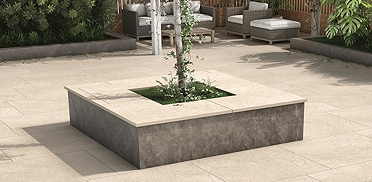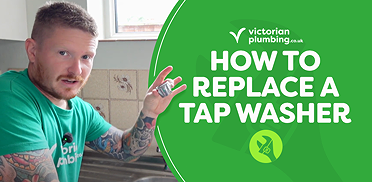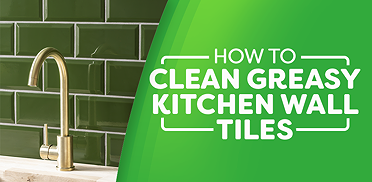Grab Up To 70% Off In Our January Sale!
Free delivery on orders over £499*
How to Clean a Shower Tray
How to Clean a Shower Tray
You don't always need specialist products to keep your shower tray sparkling clean. Read below how to clean your shower tray effectively.

Jump to a section of this post by clicking a link above
Though rarely given a thought, grubby looking shower trays can massively detract from the overall look of your bathroom. If you don’t stick to a regular bathroom cleaning routine soap scum, limescale, and even rust can quickly build up causing unsightly and unhygienic stains to your tray.
Sound familiar? You’ve probably already thought about acting on your tray’s blemishes...before immediately being put off by the prices of specialist products. While soap scum can often by be tackled with a bit of elbow grease, you’ll have been led to believe that limescale and rust removal requires costly sprays and chemicals.
However, this doesn’t have to be the case.
We’ve put together a short guide to demonstrate how to clean a shower tray (to a near-professional standard) using items commonly found in kitchen cupboards.
You’ll Need:
• Lemon juice.
• Baking soda.
• White vinegar.
• Washing Up Liquid.
• A Sponge.
• A Cleaning Cloth.
• A Spray Bottle.
• An Old Towel.
• A Jug.
Cleaning Your Shower Tray’s Soap Scum
The easiest shower tray ailment to cure, soap scum can usually be removed through sheer determination. Nevertheless, our method should make cleaning your shower tray that bit easier:
Step 1 - Heat vinegar
Heat around 100ml of white vinegar in a microwave until hot. Pour the vinegar into a spray bottle and add 100ml of washing up liquid. Gently shake the bottle to mix the liquids.
Step 2 - Ventilate room
Ventilate your bathroom. Open any windows and turn on any extractor fans you have. This mixture is quite potent!
Step 3 - Spray mixture
Making sure that your shower tray is clean and dry, liberally spray the mixture onto any soap-scum affected areas.
Step 4 - Wipe away
After 30 minutes, gently wipe the affected areas with a wet cleaning cloth. The combination of white vinegar and washing up liquid will have lifted and broken down the soap scum.
Step 5 - Rinse
Using your shower handset, rinse the shower tray to reveal a glistening, spotless surface!
Removing Limescale
Here’s where things get a little trickier. Limescale is a much more persistent substance and won’t budge with regular scrubbing. The off-white chalky deposit tends to build up in the tight spaces that connect your shower tray to your enclosure. Luckily for you, we’ve got another mixture that’ll do the trick:
Step 1 - Heat vinegar
Once again, heat around 100ml of white vinegar in a microwave until hot.
Step 2 - Mix with lemon juice
Pour the vinegar into a jug and add around 30ml of lemon juice.
Step 3 - Add baking soda
Next, add about half a cup of baking soda to the mixture and stir until you have a thick paste. If your mixture is too runny, gradually add more baking soda until the paste has a porridge-like consistency.
Step 4 - Ventilate room
Ventilate your bathroom well and make sure your shower tray is dry. Then, gently pour the paste onto the affected areas making sure they are fully covered.
Step 5 - Rinse
After an hour, rinse the paste off with your shower handset. Scrub any remaining deposits away with your sponge.
Getting Rid of Your Shower Tray’s Rust
Scrubbing for hours and making little to no progress? With a little patience and those trusty pantry products, you’ll be able to rub out that rust with ease:
Step 1 - Lemon/Vinegar soak
Ensuring your bathroom is well ventilated, liberally pour white vinegar or lemon juice onto the affected areas until they are completely covered. Allow the liquid to soak for at least two hours.
Step 2 - Rinse
Rinse away the liquid with your shower handset. Then assess the tray. This may have already removed lighter rust marks. If not, read on.
Step 3 - Dry
Dry your shower tray with an old towel. Next, create the same mixture as mentioned in the ‘Removing Limescale’ section above.
Step 4 - Spread paste
Spread the paste, generously coating the rust affected areas of your shower tray. Cover with the towel and leave for two to three hours.
Step 5 - Rinse paste
Remove your towel and rinse away the paste. You should now be staring at a spotless, sparkling shower tray.
Everyday Cleaning
Everyday cleaning is a must if you want to keep your shower tray looking clean and fresh, and luckily for you this method is the easiest to keep up with. We recommend carrying out this routine after the shower has been used for the day:
Step 1 - Rinse
The first thing you want to do is use the shower to rinse away any leftover bathroom product on the shower tray such as soap or conditioner.
Step 2 - Warm soapy water
After washing away any leftover product, you can go in with a warm soapy water mixture and a cloth to start gently cleaning the surface of the shower tray, making sure to get all the corners. It’s important to note that using white vinegar or harsh chemicals is not recommended for everyday cleaning as this could damage the finish of the tray over time.
Step 3 - Rinse soapy water
After cleaning the surface of the shower tray, you can turn the shower on again to wash away the soapy solution.
Step 4 - Dry
Now that your shower tray has had a quick clean, you can leave it to dry. You should open the windows and doors to allow fresh air into the bathroom which will also speed up the drying process. By maintaining a daily cleaning routine, you will be able to prevent the build up of mould and limescale on your shower tray.
Followed our ‘How to Clean a Shower Tray’ guide closely? Your shower tray should now look as good as new. Why not give your shower head a good deep clean too! Also check out our short guide to teach you how to install shower trays.

Megan
Megan is an expert bathroom blogger, she enjoys writing helpful DIY articles and bathroom inspo blogs. As well as specialist bathroom advice, Megan also shares expert how-to blogs with step by step guides.


